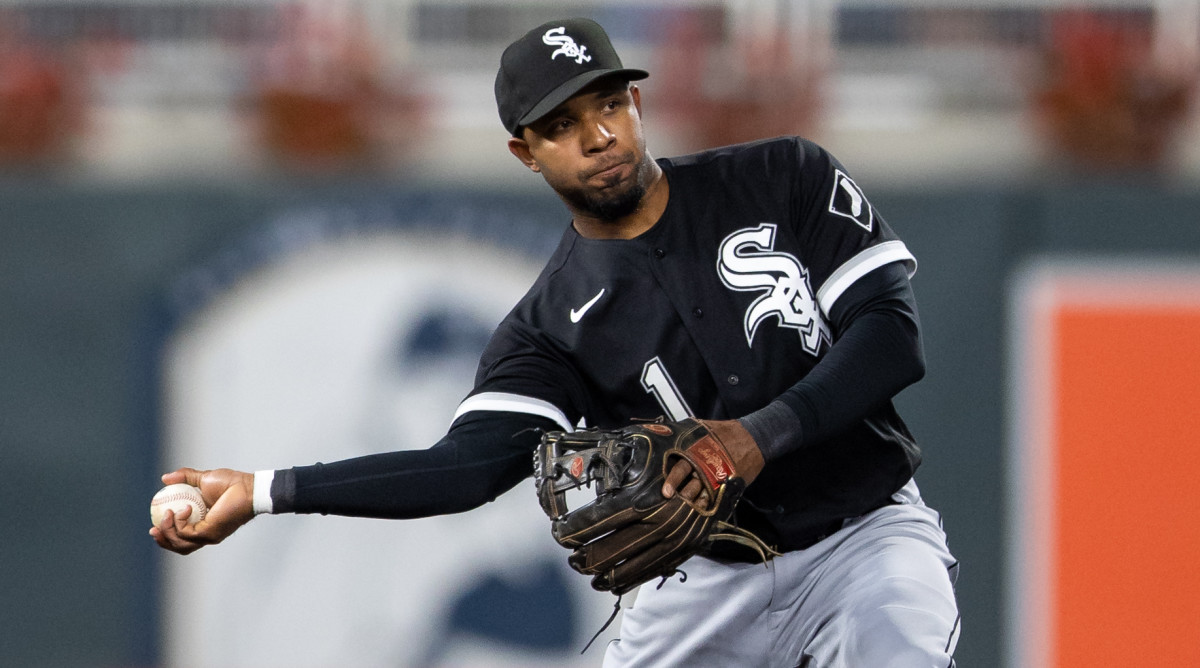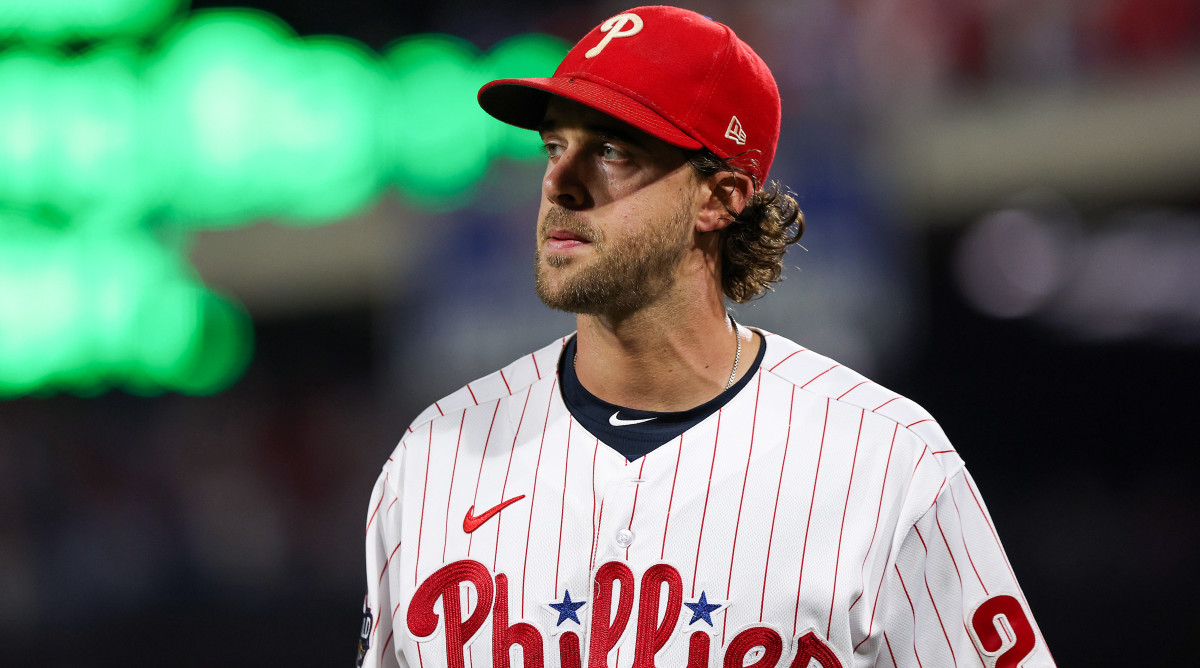Four Burning Questions Surrounding Spring Training
Editors’ note, Feb. 14, 9:56 a.m. ET: This story has been updated to reflect the reports this morning that the Padres are signing starting pitcher Michael Wacha.
Welcome to the unofficial start of baseball season.
Pitchers and catchers are reporting to spring training this week, with position players following soon after. The opening of camps brings the familiar, simple joys of bullpen sessions, outfield stretches and pitcher fielding practice. And remarkably, everyone is going to be in the best shape of their lives.
Here are four questions (and some potential answers) to get you ready for spring training:
1. Who are the top free agents still available?
The two players Emma and Stephanie Apstein wrote about at the beginning of this month—Gary Sánchez and Jurickson Profar—remain unsigned, as are several other veterans who still have something to offer teams hoping to contend.
The starting pitching market is nearly all tapped out, with fewer than a handful of arms left who could be signed to major-league deals. The standout of the group was Michael Wacha, who somehow is only 31. However, a little over an hour after this article was first published, The Athletic’s Ken Rosenthal broke the news that Wacha was signing with the Padres, pending a physical. The terms of the deal are not yet known. After three rough seasons, Wacha enjoyed an impressive comeback campaign last year with the Red Sox: He went 11–2 with a 3.32 ERA (127 ERA+) across 23 starts and 127 ⅓ innings. He pitches to contact and doesn’t walk many batters, so his success is dependent on generating soft contact, a strong defense behind him and, well, a little bit of luck. There’s a pretty steep drop off between Wacha and the next best free agent starting pitchers, Dylan Bundy and Chris Archer, who both pitched for the Twins last season. Bundy has taken a step back since finishing ninth in the 2020 AL Cy Young voting. That said, he pitched 140 innings last year, so he’s probably the best option for teams looking for a fifth starter who’ll give them some length and not much more than that.

The infield is also fairly picked over. The best middle infield option is shortstop Elvis Andrus, who proved last year that he can still be an above-average starter. In 149 games between the A’s and White Sox, he batted .249/.303/.404 with 17 home runs and a 103 OPS+. He stole 18 bases and played solid defense. He’d be a smart signing for the Angels, who despite (smartly) beefing up their infield depth this offseason do not have a true shortstop on their roster. Teams looking to add a veteran corner infielder, designated hitter or bench bat should certainly consider buying low on Luke Voit, who led MLB with 22 home runs in the pandemic-shortened 2022 season. Despite a relatively down year last season, Voit hit 22 dingers between the Padres and Nationals. The Twins could use him after trading first baseman Luis Arraez.
Besides Profar in the outfield, teams seeking a fourth outfielder could target Robbie Grossman, who is coming off a rough year but was an above-average batter in each of the two previous seasons and owns a career .346 on-base percentage. The Rangers could use some depth in their top-heavy lineup, and adding a veteran such as Grossman could help relieve some of the pressure on young outfielders Josh H. Smith and Leody Taveras.
2. Which rule changes should be the most immediately obvious?
The spring games will bring our first look at all of MLB's new rules. But expect some to make their presence known more quickly than others. On top of that list? The pitch clock. While the timer is easy to get used to—just ask anyone who watched Triple-A games last year—the fact that it's a presence on every pitch means it will naturally stand out a bit at first. And that’s partially because both pitchers and hitters will need to adjust. For pitchers, the new rule means no more than 15 seconds between pitches with the bases empty and no more than 20 seconds with runners aboard. For batters, the relevant portion here is a requirement to be ready and in the box when the timer hits the eight-second mark. Think of how often a plate appearance last year could have the pitcher shaking off signs, the hitter stepping out to adjust his batting gloves the pitcher taking some more time to collect himself … and the whole process repeating. No more! Which should make for a pretty big adjustment at first. Expect to see this spring play out as a learning process for everyone.
The shift ban will be hard to miss, too, if only because of how frequently it was being used previously. (Remember, the new rule is not just that two infielders have to be on each side of second base, but that all four have to be on the dirt, too!) Elsewhere in the new rulebook, most of the others should make their impact felt more gradually over time. For instance, the combination of limited pickoffs and larger bases should certainly juice the running game, but it may take a while to notice the cumulative effect.
3. Who are the most noteworthy players who could sign extensions?
Unless they extend him, Manny Machado can and almost certainly will opt out of his deal with the Padres after this season. The 30-year-old third baseman knows that his market value is much higher than the six years and $180 million he has left on his contract entering 2023. He also knows how important he is to San Diego as the team tries to chase down the Dodgers in the NL West and win the first World Series in franchise history. Obviously, the Padres understand this, too. Simply, he has all the leverage to get the long-term deal he desires with the Padres, and they haven’t given us any reason to expect that they won’t be willing to pay him.

The other prominent pending free agent who could be in for a hefty extension is righthander Aaron Nola, who has spent his entire career with the Phillies. Nola is one of the remaining few workhorse starting pitchers in the game today. Since 2018, he has made the most starts (143) and thrown the most innings (871 ⅔) in the majors. He also ranks third in WAR (23.9) among all pitchers, per Baseball Reference, behind only Max Scherzer and Jacob deGrom. Considering his age (he turns 30 in June), durability and dominance, he should have plenty of suitors for a long-term deal should he enter free agency. The Phillies would be better off not letting him get there.
The Angels almost certainly will attempt to extend Shohei Ohtani, too, but it’s hard to imagine him not testing free agency after the season. Same thing with Dodgers lefthander Julio Urías, whose agent, Scott Boras, typically wants his clients to see what they can get on the open market.
Here are a few arbitration eligible players who could be extended this spring: Mets first baseman Pete Alonso (under club control through the 2024 season), Astros lefthander Framber Valdez and outfielder Kyle Tucker (both under control through ’25) and Giants righthander Logan Webb (through ’25). Oh, and pretty much any Atlanta player who hasn’t already signed an extension.
4. Who are the top prospects to follow?
The Orioles have both the best hitting and pitching prospects in the game, though for the purposes of this exercise we will not be focusing on Gunnar Henderson, who is projected to be their Opening Day shortstop. Instead, this is an important spring for righthander Grayson Rodriguez, who could earn a rotation spot if he pitches well. He can hit triple digits with his fastball, and he boasts at least three plus secondary pitches (slider, curveball, changeup).
We’ve been hearing about Yankees shortstop Anthony Volpe for a while now. His potential is a big reason why they declined to sign one of the marquee free-agent shortstops for the second consecutive offseason. It’s unlikely that he’ll be their starting shortstop at the start of the season, but a strong spring could help his case to be called up sooner than later. There is some concern that Volpe lacks the arm strength to be an everyday shortstop in the majors, but his combination of power and speed should make him an impact player at either middle infield position.
Cardinals third baseman/right fielder Jordan Walker, who turns 21 in May, is the most tantalizing hitting prospect in baseball. Gifted with tremendous size (6'5" and 220 pounds), he can generate his prodigious power with a short, efficient stroke that should allow him to avoid the swing-and-miss problems that have doomed plenty of exciting young batters. He’ll most likely start the season in the minors, but this spring is a good opportunity to see how he fares against big league pitching.
Watch MLB Network live with fuboTV: Start a free trial today.
